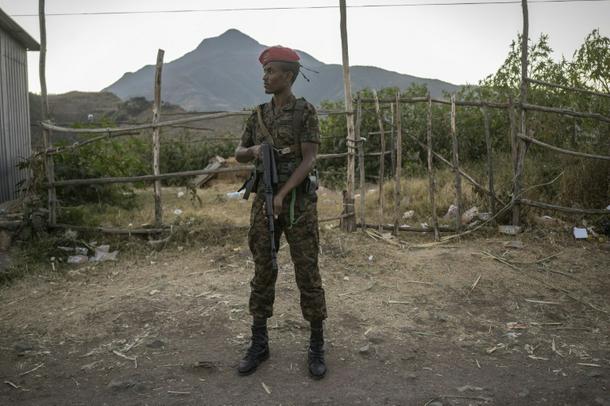
The ceasefire aims to bring an end to two years of fighting between Ethiopian soldiers and the TPLF
Nairobi (AFP) - Ethiopia’s government and Tigray’s rebel forces have agreed to create a joint monitoring body to ensure a peace deal to end the country’s brutal war is respected by all sides.
The rivals announced a ceasefire in November that halted fighting in the northern Tigray region, where tens of thousands have died in two years of bloodshed.
Among the terms of the agreement was a provision to establish a monitoring and compliance mechanism so that both sides could be confident the truce was being honoured, and any violations addressed.
These details were finalised Thursday by military commanders from Ethiopia’s government and the Tigray People’s Liberation Front (TPLF) at a meeting in the Kenyan capital Nairobi.
Workneh Gebeyehu, executive secretary of IGAD, the East African bloc supporting the process, said the creation of a joint monitor was a “clear testament” by all parties to honour the letter and spirit of the peace deal.
A representative from each side of the conflict, plus a delegate from IGAD and the African Union (AU), would form a joint committee to safeguard the peace deal and ensure its provisions are being respected.
Among other duties would be ensuring forces remain loyal to the TPLF disarm and that no further weaponry or munitions reaches the rebels, according to the final terms of reference shared by Tigray’s regional authorities.
A panel of African experts, chosen by the AU, would assist the committee by investigating ceasefire violations and monitoring progress on the ground, including the withdrawal of forces not signatory to the peace agreement.
Pro-government forces – specifically troops from Eritrea to the north, and militias from the Ethiopian region of Amhara – are not mentioned in the peace deal but remain in Tigray and have been accused of abuses.
- Alleged war crimes -
In a statement Thursday, the European Union’s top diplomat Josep Borrell said a “robust and sustainable monitoring mechanism” was essential to keeping the peace and promoting recovery and reconciliation in war-torn Tigray.
Estimates of casualties vary widely, with the United States saying that as many as half a million people have died, while Borrell says more than 100,000 people may have been killed.
The war began in November 2020 when Prime Minister Abiy Ahmed sent troops into Tigray after accusing the TPLF, the ruling party in the region, of attacking army bases.
All sides to the conflict have been accused of possible war crimes by UN investigators, and the US has warned ethnic cleansing may have occurred in western Tigray.
Aid has started trickling back into Tigray since the peace deal was signed in November, going some way to alleviating dire shortages of food, fuel, cash and medicines.
But the region of six million is still largely without electricity and phone lines, while internet and banking services have only partly been restored.